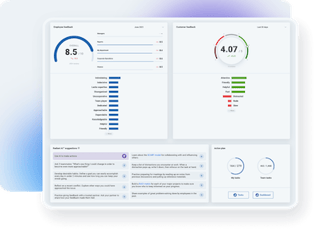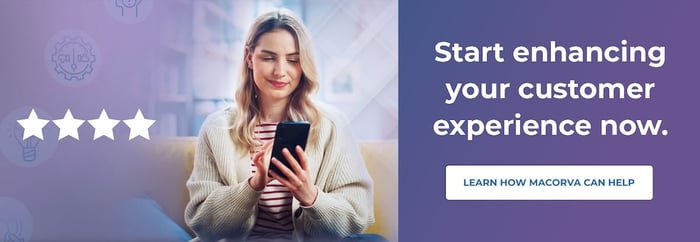What is Customer Experience?
The Complete Guide to CX Success

What is Customer Experience?
The Complete Guide to CX Success

What is Customer Experience? A Clear Definition
In today’s hyper-competitive business world, where customer satisfaction and retention are paramount, organizations are increasingly focusing on the customer experience (CX). Customer experience encompasses the entire customer journey, from initial awareness and consideration to purchase, service, and post-purchase interactions. It's the culmination of all interactions, touchpoints, and experiences that shape a customer's perception of a brand.
With customer preferences constantly evolving and their expectations soaring, customer experience has emerged as the critical differentiator for organizations across all industries.
Customer Service vs. Customer Experience: Key Differences
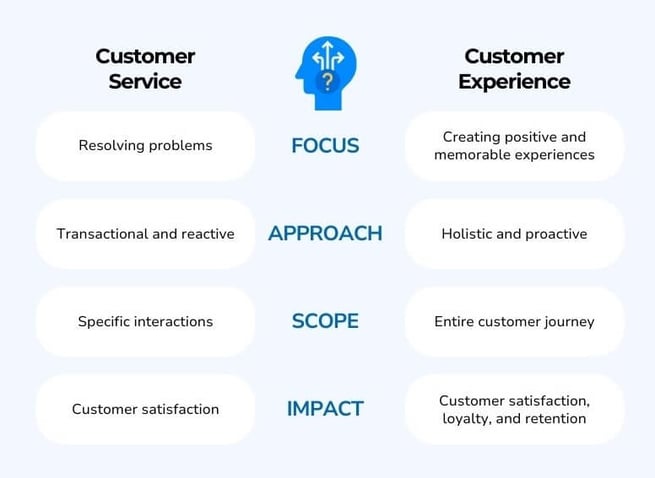
While customer service is an important component of customer experience, it is important to distinguish between the two concepts.
Customer service orbits a specific interaction between a customer and a company representative, typically focused on resolving a single issue. It is a transactional and reactive approach that focuses on addressing immediate customer needs.
Customer experience (CX) encompasses all interactions between a customer and your business throughout their entire journey. From initial awareness and consideration to purchase, service, and post-purchase advocacy, CX defines how customers perceive your brand. It is a comprehensive, continuous, interdisciplinary initiative focused on creating positive and memorable experiences for customers at every touchpoint. Explore customer experience use cases to see real-world applications.
In essence, customer service is about fixing problems, while customer experience is about improving experiences. Customer service focuses on specific interactions. In contrast, the customer experience represents the sum total of all customer interactions and perceptions that shape a customer's overall relationship with your brand. Both are important for business success, but customer experience encompasses a broader strategic approach to optimizing customer satisfaction, loyalty, and retention.
This comprehensive guide explores the customer experience definition, measurement frameworks, and strategies to improve customer experiences across all touchpoints.
Why Customer Experience Matters for Business Success
Prioritizing customer experience is not just a buzzword or a feel-good initiative; it's a strategic imperative for organizations that want to achieve sustainable growth and success. A strong customer experience leads to a multitude of benefits, including:
Increased customer satisfaction and loyalty
Studies have consistently shown a strong correlation between customer experience and loyalty. Satisfied customers are more likely to repeat business, recommend the brand to others, and provide positive online reviews.
Improved customer retention and reduced churn
Acquiring new customers is expensive, while retaining existing ones is significantly more cost-effective. A strong customer experience can significantly reduce customer churn, saving organizations the significant costs associated with acquiring new customers.
Enhanced brand reputation and perception
In today's interconnected world, where word-of-mouth travels fast, a positive customer experience contributes to a strong brand reputation, attracting new customers and investors.
Greater competitive advantage
In a cluttered marketplace, where products and services are often similar, a differentiated customer experience can give organizations a competitive edge.
Increased revenue and profits
Satisfied and loyal customers are the backbone of any successful business. They are more likely to spend more, make repeat purchases, and engage with the brand, leading to increased revenue and profits.
Understanding the 5 Phases of Customer Experience Journey
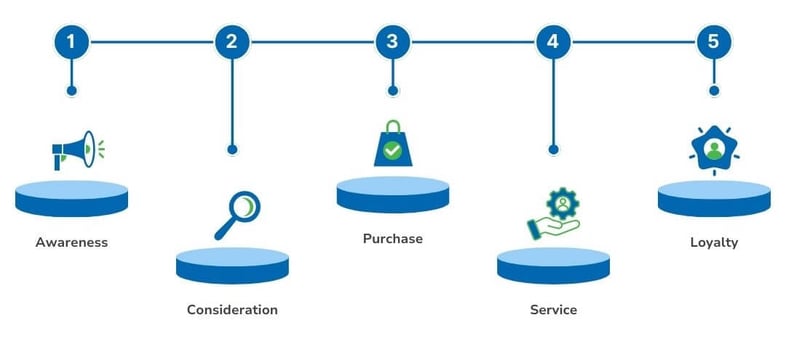
Customer experience encompasses a broad spectrum of factors that influence how customers perceive their interactions with a brand. These can be grouped into five main phases:
Phase 1: Awareness
The customer experience journey begins with awareness. This critical first phase is where potential customers discover your brand through various channels including search, social media, advertising, and word-of-mouth recommendations. Optimizing this phase of the consumer experience is essential for building a strong foundation for future customer relationships. The awareness phase can significantly impact your business outcomes by:
Attracting new customers
Consider these sources:
A study by Spiegel Research Center found that most people read at least 10 reviews before forming an opinion about a business, which gives context to the level of influence a strong customer experience has on new customer acquisition.
A study by BrightLocal found that 84% of consumers trust online reviews as much as personal recommendations. This suggests that favorable online reviews can play a significant role in attracting new customers.
Influencing purchasing decisions
Awareness and familiarity with a brand can influence purchasing decisions, making customers more likely to consider a brand when they are ready to make a purchase.Consider these sources:
A survey by Invesp found that 72% of consumers say that positive reviews make them trust a business more and that they are more likely to make a purchase.
A Podium study found that 93% of customers indicated online reviews impacted their purchasing decisions. And 82% of customers said the content of a review had convinced them to make a purchase. This shows the significant impact social reviews have on purchasing decisions.
BrightLocal’s “Local Consumer Review Survey 2023” indicates that 88% of surveyed customers are likely to use a business if they can see the business owner responds to all reviews, whether positive or negative. This shows the deep impact a timely response can have on customer experience.
Driving website traffic
Core customer experience components
- Reputation: Describes customers’ overall perception of the brand in the market and among potential customers.
- Social reviews: Online reviews and ratings from existing customers, which can influence the purchasing decisions of potential customers.
Phase 2: Consideration
In the consideration phase, potential customers evaluate various options and compare brands before making a purchasing decision. This phase is critical for showcasing product value and demonstrating the brand's unique selling proposition. A seamless digital customer experience, a user-friendly website or mobile app, and positive online reviews can significantly impact business outcomes by:
Increasing customer engagement
Enhancing product understanding
Building trust and credibility
Source: A survey from BrightLocal found that half of consumers trust online reviews as much as personal recommendations from friends and family. This suggests that positive online reviews can play a significant role in building trust and credibility with potential customers.
Core customer experience components
- Digital Experience: The user experience on the brand's website, mobile app, and other digital channels.
Phase 3: Purchase
The purchase phase involves the actual transaction where customers exchange their money for products or services. This phase is crucial for ensuring a smooth and frictionless buying experience that encourages repeat business. Post-purchase surveys, omnichannel distribution, and mobile-first feedback mechanisms can significantly impact business outcomes by:
Identifying purchase-related issues
Source: Microsoft’s “State of Global Customer Service” report indicates that 77% of customers more favorably view brands that seek out and apply feedback from customers.
Optimizing omnichannel experiences
Consider these sources:
Salesforce’s “State of the Connected Customer” report indicates that on average, business buyers use about 10 different channels when engaging with companies. The same report found that 79% of customers expect consistent interactions across all these channels.
Salesforce’s “State of Service” report indicates 78% of customers use text messaging to communicate with businesses, and 82% use mobile apps.
Gathering immediate feedback
Source: Data from Salesforce indicates 64% of customers want to shop with companies that can meet their needs in real-time. This demonstrates the importance of omnichannel support when connecting with customers about their experiences.
Core customer experience program components
- Post-purchase surveys: Feedback collected from customers after a purchase to assess their satisfaction with the buying process.
- Omnichannel distribution: The ability to provide a seamless and consistent experience across all channels, including online, in-store, and mobile.
- Mobile-first feedback: Collecting feedback through mobile-friendly methods, such as SMS surveys and QR codes.
Phase 4: Service

The service phase encompasses the interactions customers have with the brand after making a purchase. This phase is critical for resolving customer issues, providing support, and fostering long-term relationships. Customer satisfaction, customer effort score (CES), customer service and contact center effectiveness, integrated voice response (IVR) performance, agent scorecards, and closed-loop follow-up can significantly impact business outcomes by:
Reducing customer churn
Effective customer service and timely resolution of issues can prevent customer dissatisfaction and reduce the likelihood of churn.
Source: According to Zendesk’s “2023 CX Trends Report:” 72% of customers want immediate service, 70% expect anyone they interact with to have the full context for their issue, and 64% will spend more if a business resolves their issues where they already are. This shows the considerable impact an effective customer service loop can have on customer experience and retention.
Increasing customer loyalty
Source: Data from Zendesk indicates 52% of customers go out of there way to purchase from brands they are loyal to. And when it comes to spending, loyal customers pay more by an average 33% per order than regular customers (Annex Cloud).
Improving brand reputation
Consider these sources:
81% of shoppers make decisions based on their level of trust for a brand (Annex Cloud). This shows how influential brand and reputation management are to business outcomes.
Deloitte’s report, “The True Value of Customer Experiences,” indicates customers tell an average of nine people about a positive experience with a brand- and will tell 16 people about a negative experience. This demonstrates the huge influence of customer experience on a business’s brand and reputation.
Core customer experience program components
- Customer satisfaction (CSAT): The overall level of satisfaction customers have with the brand's products, services, and interactions.
- Customer effort score (CES): A measure of how easy it is for customers to resolve issues or complete tasks.
- Customer service and contact center: The quality and efficiency of customer service interactions.
- Agent scorecards: The performance metrics used to evaluate customer service representatives.
- Closed-loop follow-up: The process of following up with customers after they have contacted customer service to ensure their satisfaction is resolved.
Phase 5: Loyalty and Expansion (Referrals)
The loyalty and expansion phase represents the pinnacle of customer experience, where customers become loyal advocates and referrers for the brand. Net Promoter Score (NPS), sentiment analysis, brand analysis, and analysis of churn can significantly impact business outcomes by:
Identifying brand advocates
NPS measures customer loyalty and willingness to recommend the brand to others, allowing the identification of brand advocates who can promote the brand's offerings.
Source: Bain & Company reports that 80-90% of positive referrals come from a company’s Promoter customers. This shows how effective NPS is as a tool for identifying and engaging with brand advocates.
Understanding customer sentiment
Sentiment analysis provides insights into customer emotions and perceptions, helping the brand address any underlying issues or concerns.
Assessing brand reputation
Brand analysis evaluates the overall perception and reputation of the brand, identifying areas where the brand can strengthen its positioning.
Reducing churn
Analyzing the reasons for customer churn can help the brand address common issues and prevent customers from discontinuing their business.
Core customer experience program components
- Net Promoter Score (NPS): A measure of customer loyalty and willingness to recommend the brand to others.
- Sentiment analysis: Analyzing customer feedback to understand their emotional sentiment and identify areas for improvement.
- Brand analysis: Assessing the brand's overall reputation and perception among customers.
- Analysis of churn: Identifying the reasons why customers are discontinuing business with the brand.
Customer Experience Metrics & Measurements: Complete Guide

A comprehensive customer experience program should incorporate a variety of metrics to measure the customer experience throughout the journey. These metrics can include:
General Customer Experience Metrics
These metrics provide a broad overview of the customer experience across all touchpoints:
CSAT (Customer Satisfaction)
CSAT measures the overall satisfaction of customers with the brand's products, services, and interactions. This helps businesses understand how satisfied customers are with their overall experience and identify areas for improvement.
CES (Customer Effort Score)
CES measures how easy it is for customers to resolve issues or complete tasks. This helps businesses understand the level of effort required by customers to interact with the brand and identify potential friction points.
NPS (Net Promoter Score)
NPS measures customer loyalty and willingness to recommend the brand to others. This helps businesses understand how likely customers are to promote the brand to their network, providing valuable insights into customer advocacy.
Agent-Specific Feedback
These metrics focus on the interactions between customers and customer service agents.
Agent Resolution Time
Measures the average time it takes for an agent to resolve a customer issue. This helps businesses understand the efficiency of their customer service operations and identify potential bottlenecks.
First Call Resolution (FCR)
Measures the percentage of customer issues resolved on the first contact with an agent. This helps businesses understand the effectiveness of their customer service interactions and identify opportunities to reduce repeat contacts.
Agent Satisfaction
Measures the satisfaction and engagement of customer service agents. This helps businesses understand the morale and well-being of their employees, which can directly impact the quality of customer service.
Agent Knowledge and Competence
Assesses the level of knowledge and expertise of customer service agents. This helps businesses ensure that agents have the necessary skills to effectively handle customer inquiries and resolve issues.
Agent Empathy and Customer Service Skills
Evaluates the empathy and customer service skills of customer service agents. This helps businesses identify agents who exhibit the right attitude and interpersonal skills to deliver exceptional customer service.
Location-based Metrics for Location-based Operations
These metrics focus on the customer experience at physical locations:
Store-specific CSAT and NPS
Measure customer satisfaction and loyalty at specific locations. This helps businesses understand the customer experience at individual locations and identify areas for improvement.
Wait Times in Physical Locations
Measure the average wait time for customers to receive service at physical locations. This helps businesses manage customer flow, optimize staffing levels, and reduce wait times.
Local Customer Feedback and Reviews
Gather feedback and reviews from customers specific to individual locations. This provides valuable insights into the customer experience at each location and identifies potential issues that need to be addressed.
Location-specific Employee Engagement
Assesses employee engagement and satisfaction at individual locations. This helps businesses identify potential engagement issues and implement strategies to improve employee morale and productivity.
Local Compliance with Brand Standards
Evaluates adherence to brand standards and customer service protocols at individual locations. This ensures consistency in the customer experience across all locations and maintains the brand's reputation.
Ratings for Services, Departments, and Teams
These metrics provide insights into the customer experience with specific services, departments, or teams:
Service-specific CSAT and NPS
Measure customer satisfaction and loyalty with specific services or products. This helps businesses understand the customer experience with individual offerings and identify areas for improvement.
Departmental CSAT and NPS
Measure customer satisfaction and loyalty with specific departments or teams. This helps businesses identify departments or teams that may need additional training, resources, or support.
Team-specific CSAT and NPS
Measure customer satisfaction and loyalty with specific teams or groups of employees. This helps businesses recognize and reward high-performing teams and address the performance of teams that need improvement.
Service-specific Recommendations
Gather feedback on specific services or products to identify areas for improvement. This provides valuable insights into customer needs and expectations and helps businesses enhance their offerings.
Department-specific Feedback
Collects feedback on specific departments or teams to enhance their performance. This identifies potential issues, areas for improvement, and opportunities for training and development.
Unlock Instant Customer Insights with Radiant AI: Watch the Video
By incorporating these metrics throughout the customer journey, organizations can gain a comprehensive understanding of the customer experience, identify areas for improvement, optimize resources, and enhance the overall customer journey. This data-driven approach can lead to increased customer satisfaction, loyalty, and retention, ultimately driving business growth and success. Discover how customer experience analytics can transform your business decisions in this blog.
Customer Experience Management: Strategies & Best Practices
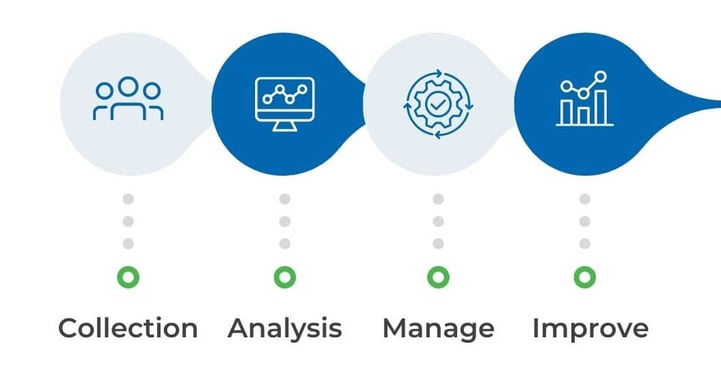
Customer experience services have evolved to help businesses systematically collect, analyze, and act upon customer feedback. This process is fundamental to a strategic, data-driven approach, allowing businesses to truly understand their customers. A crucial part of this involves integrating data from various sources to create a holistic view of customer interactions, enabling organizations to make informed decisions about experience improvements. Learn how Macorva's customer experience solutions can help your organization implement this strategic approach.
1. Data Collection: Gathering Customer Insights
The foundation of a successful customer experience program lies in gathering comprehensive and insightful customer feedback. This involves utilizing a variety of data collection methods, including:
- Mobile-first surveys: Utilize mobile-friendly surveys to reach customers across various devices and locations, ensuring accessibility and convenience.
- Structured and open-ended questions: Combine structured questions to gather specific data with open-ended questions to capture qualitative feedback and customer perspectives.
- Integrated feedback into digital experiences: Collect feedback directly within the customer journey, such as after a purchase or service interaction.
- Contact center follow-up: Gather feedback through follow-up calls or emails after contacting customer support.
2. Customer Experience Analytics: Uncovering Patterns and Trends
Once customer feedback is collected, it's crucial to analyze the data to identify trends, patterns, and areas for improvement. This involves utilizing advanced analytics tools and techniques, such as:
- CRM and ticketing integration: Integrate customer feedback data with CRM and ticketing systems to gain a holistic view of customer interactions and identify pain points.
- User-configurable dashboarding: Provide user-friendly dashboards that allow managers and stakeholders to easily access, visualize, and analyze customer experience data.
- Driver analysis: Identify the root causes of customer satisfaction and dissatisfaction by analyzing customer feedback and transaction data.
- Trend analysis: Track trends in customer sentiment and satisfaction over time to identify areas for improvement and monitor the impact of customer experience initiatives.
- Sentiment analysis: Utilize sentiment analysis tools to assess the overall tone and sentiment of customer feedback, providing valuable insights into customer emotions and concerns.
- Artificial intelligence (AI): Employ AI algorithms to automate data analysis, identify hidden patterns, and generate predictive insights into customer satisfaction, loyalty, and churn.
3. Change Management: Implementing Effective Interventions
Data-driven insights from customer experience analysis should be translated into actionable interventions that address customer concerns and improve the overall customer experience. This involves:
- Generative AI for long-term and short-term data-driven strategies: Leverage generative AI to develop long-term and short-term customer experience strategies based on customer feedback and data analysis.
- Closed-loop follow-up to retain customers: Implement a closed-loop follow-up process to address customer concerns, resolve issues, and prevent churn.
- Personalized recommendations and resources for local managers and employees: Provide local managers and employees with personalized recommendations and resources based on their specific customer feedback and data.
- Guided manager enablement: Equip managers with the skills and knowledge to effectively implement customer experience initiatives and address customer concerns.
- Interactive coaching: Offer interactive coaching sessions to managers and employees to provide personalized support and guidance on improving customer experience-related issues.
- Generate resources from customer experience data: Utilize customer experience data to generate engaging and informative content, such as training materials, communication campaigns, and customer-centric initiatives.
4. Continuous Improvement: A Journey of Ongoing Enhancement
The effectiveness of a customer experience program should be continuously evaluated and measured to track progress and identify areas for further improvement. This involves:
- Establishing customer experience metrics: Define and track key customer experience metrics, such as CSAT, CES, NPS, and customer churn rates.
- Regular feedback loops: Implement regular feedback loops to gather ongoing customer input and monitor the impact of customer experience initiatives.
- Data-driven decision-making: Use customer experience data to inform strategic decisions, prioritize initiatives, and optimize resource allocation.
- Aligning customer experience initiatives with business goals: Ensure customer experience initiatives align with the organization's overall business goals, objectives, and brand identity.
Digital Customer Experience: Enhancing Online Consumer Journeys
In the digital age, the customer journey has increasingly shifted online, making the digital customer experience especially critical to business success. Digital experience encompasses all interactions a customer has with a brand through digital channels, including websites, mobile apps, social media, and email. By optimizing digital experience, businesses can reduce friction, enhance online interactions, personalize experiences, and ultimately drive customer satisfaction, loyalty, and advocacy.
Reducing Digital Friction and Enhancing Online Interactions

Digital friction refers to any obstacle or pain point that hinders a customer's digital journey. Common examples include slow loading times, complex navigation, confusing error messages, and unresponsive support. Reducing digital friction is essential for creating a seamless and enjoyable online experience.
Strategies for reducing digital friction include:
- Optimizing website and app performance: Ensure fast loading times, minimize redirects, and optimize for mobile devices.
- Simplifying navigation: Use clear and consistent navigation structures, avoid excessive menus, and provide clear search functionality.
- Enhancing usability: Use intuitive design principles, make it easy for users to find information and complete tasks, and provide clear instructions and prompts.
- Minimizing errors: Implement robust testing procedures, handle errors gracefully, and provide clear error messages with solutions.
- Streamlining customer support: Offer multiple support channels, provide self-service options, and ensure prompt and effective responses to inquiries.
Leveraging AI for Improved Digital Customer Experience
Artificial intelligence (AI) is rapidly transforming digital experience by automating tasks, providing personalized recommendations, and enabling real-time customer support. AI-powered chatbots can handle routine inquiries, freeing up human agents to focus on more complex issues. AI can also analyze customer data to provide personalized product recommendations, optimize marketing campaigns, and identify potential churn risks.
Strategies for leveraging AI for improved digital experience include:
- Implementing AI-powered chatbots: Provide 24/7 support, answer FAQs, and handle routine tasks.
- Personalizing customer experiences: Tailor product recommendations, marketing messages, and website content based on individual preferences and behavior.
- Predicting customer behavior: Anticipate customer needs, identify potential issues, and proactively offer assistance.
- Optimizing marketing campaigns: Deliver targeted messages at the right time and through the right channels.
- Identifying churn risks: Proactively engage with at-risk customers to address concerns and prevent churn.
Aligning Digital Experience with Traditional Customer Experience

While digital experience has become increasingly important, traditional customer experience, which encompasses offline interactions like in-store experiences and phone calls, remains relevant. Businesses need to ensure consistency in their customer experience across all channels, providing a seamless and cohesive experience regardless of how customers interact with the brand.
Strategies for aligning digital and traditional customer experience include:
- Maintaining consistent branding: Use a unified brand voice, logo, and messaging across all channels.
- Enabling seamless transitions: Allow customers to easily switch between digital and traditional channels without losing context.
- Sharing customer data: Integrate data from different channels to provide a holistic view of each customer.
- Training employees consistently: Equip employees with the skills and knowledge to provide excellent customer experience across all channels.
- Measuring customer experience consistently: Use consistent metrics to track customer experience performance across all channels.
Improving Customer Experiences: Practical Strategies

There are numerous strategies and tips that businesses across various industries can implement to enhance customer experience. Here are some key considerations:
- Know your customers: Understand your customer demographics, preferences, and pain points.
- Set clear customer experience goals: Define what you want to achieve with your customer experience efforts and establish measurable goals.
- Map the customer journey: Identify all the touchpoints customers have with your brand and identify opportunities for improvement.
- Empower your employees: Provide employees with the training, tools, and resources they need to deliver exceptional customer experience.
- Use technology wisely: Leverage technology to personalize experiences, automate tasks, and provide real-time support.
- Collect and analyze customer feedback: Continuously gather and analyze feedback to identify areas for improvement.
- Measure customer experience performance: Use metrics like customer satisfaction (CSAT), net promoter score (NPS), and customer effort score (CES) to track progress.
Innovations in Customer Experience
Businesses are constantly innovating to improve customer experience, leveraging technology, data analytics, and creativity to deliver exceptional experiences for their customers. Some of the most notable innovations in customer experience include:
- Personalized experiences: Using data and AI to tailor products, services, and communications to individual customer preferences.
- Omnichannel experiences: Providing a seamless customer journey across all touchpoints, including online, offline, and mobile.
- Real-time customer support: Utilizing chatbots, virtual assistants, and other tools to provide immediate assistance to customers.
- Data-driven decision-making: Using customer data insights to inform customer experience strategies and improve decision-making.
- Employee engagement: Empowering employees to deliver exceptional customer experience through training, recognition, and rewards.
Role of Technology and AI in Enhancing Customer Experience
Technology and AI are playing an increasingly important role in enhancing customer experience. Here are some specific examples of how technology is being used to improve customer experience:
- Chatbots and virtual assistants: Offering 24/7 customer assistance, responding to frequently asked questions, and managing everyday tasks.
- Personalization engines: Recommending products, services, and content based on individual preferences and behavior.
- Predictive analytics: Anticipating customer requirements, recognizing possible problems, and actively providing support.
- Natural language processing (NLP): Enabling chatbots to understand and respond to customer inquiries in a natural and conversational manner.
- Machine learning (ML): Identifying patterns in customer data to improve customer experience strategies and decision-making.
Role of Employees in Enhancing Customer Experience
Employees play a critical role in delivering exceptional customer experience. They are often the first point of contact with customers and have the ability to make a lasting impression. Businesses need to invest in their employees by providing them with the training, tools, and resources they need to deliver exceptional customer experience. This involves:
- Creating a clear vision and mission for customer experience: Clearly communicate the company's goals for customer experience and how employees can contribute to achieving those goals.
- Empowering employees to make decisions: Give employees the autonomy to resolve customer issues and make decisions that improve customer experience.
- Providing regular feedback and coaching: Regularly provide employees with feedback on their customer experience performance and offer coaching and development opportunities.
- Recognizing and rewarding excellent customer experience: Publicly recognize and reward employees who consistently go above and beyond to deliver exceptional customer experience.
- Creating a culture of open communication: Encourage open communication between employees and management to address customer experience concerns and identify opportunities for improvement.
- Investing in employee well-being: Provide employees with resources and support to promote their physical, mental, and emotional well-being.
Connecting Employee Engagement with Customer Experience
There is a strong correlation between employee engagement and customer experience. Engaged employees are more likely to be motivated, productive, and customer-centric. This, in turn, leads to a better customer experience for customers. A study by Gallup found that companies with highly engaged workforces have 18% higher sales and 23% higher profitability.
Customer Experience in Different Industries

The landscape of customer experience varies greatly across different industries. Each sector faces distinct challenges engaging with their customers and building lasting relationships. As a result, each sector also requires distinct strategies that address the specific needs and expectations of customers in their industry.
Healthcare
Navigating the complexities of healthcare can be daunting for patients. Businesses in this sector must prioritize personalized experiences, leveraging technology for accessibility and communication, and empowering patients with knowledge to create a journey of trust and well-being.
- Challenges: Navigating complex healthcare systems, dealing with sensitive patient information, and managing patient expectations.
- Strategies: Personalizing healthcare experiences, utilizing technology to improve patient access and communication, and emphasizing patient education.
Retail
In the ever-evolving landscape of retail, understanding dynamic consumer preferences and tailoring experiences accordingly is key. Omnichannel strategies that blend online and offline convenience with immersive in-store environments and flexible fulfillment options will keep customers engaged and loyal.
- Challenges: Keeping up with evolving customer preferences, managing omnichannel experiences, and providing seamless returns and exchanges.
- Strategies: Leveraging data analytics to personalize product recommendations, creating immersive in-store experiences, and offering flexible fulfillment options.
Banking
Balancing security with convenience while building trust is paramount for the financial sector. By leveraging technology to streamline transactions and offering personalized financial guidance, banks can foster a sense of transparency and empower customers to manage their finances with ease.
- Challenges: Balancing security with convenience, providing personalized financial advice, and building trust in a complex industry.
- Strategies: Utilizing technology to streamline financial transactions, offering personalized financial planning services, and emphasizing transparency and communication.
Technology
At the forefront of innovation, the tech industry faces the challenge of exceeding ever-rising customer expectations. By staying ahead of the curve with cutting-edge solutions, embracing user-centric design principles, and prioritizing data security, technology companies can create seamless and secure experiences that drive customer satisfaction and advocacy.
- Challenges: Meeting ever-rising customer expectations for seamless digital experiences, navigating data privacy concerns, and staying ahead of the technology curve.
- Strategies: Implementing intuitive interfaces, prioritizing data security, and fostering a culture of continuous innovation by anticipating customer needs and embracing the latest advancements.

Emerging Customer Experience Trends & Future of CX
There are a number of emerging trends shaping the future of customer experience. These include:
Omnichannel experiences
Customers expect to be able to interact with brands seamlessly across all channels, including online, offline, and mobile. Businesses that can provide a consistent and integrated omnichannel experience will be at a competitive advantage.
Data-driven decision-making
Businesses are increasingly using data analytics to understand their customers' needs and behaviors, and to inform their customer experience decisions. Data-driven customer experience is essential for creating personalized and effective experiences.
Integrated employee experience
Employees are the face of the brand, and their engagement is critical for delivering exceptional customer experience. Businesses that invest in their employees and create a culture of customer-centricity will be well-positioned for success.
AI and the Future of Customer Experience
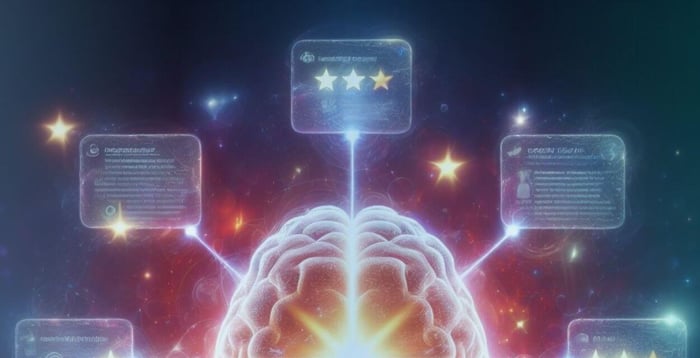
Artificial intelligence (AI) is revolutionizing customer experience (customer experience) by providing new opportunities for personalization, automation, and real-time support. As AI technology continues to develop, we can expect to see even more innovative customer experience solutions emerge in the years to come.
Here are some of the key trends in AI-powered customer experience:
Personalized customer service and experiences
AI can be used to analyze customer data and identify individual preferences, making it possible to deliver personalized recommendations, offers, and content.
Automated tasks
AI-powered chatbots and virtual assistants can automate many routine customer service tasks, such as answering FAQs, providing product information, and resolving simple issues.
Real-time support
AI can be used to monitor customer interactions and identify potential issues in real time, allowing businesses to proactively offer assistance when needed.
Customer experience is no longer a luxury; it is a necessity for businesses that want to thrive in today's competitive landscape. Exceptional customer experience can lead to increased customer satisfaction, loyalty, and advocacy, ultimately driving business growth and profitability. Conversely, poor customer experience can damage a company's reputation, lead to customer churn, and hinder its ability to compete effectively.
As we look to the future, customer experience will become even more important as customers' expectations continue to rise. Businesses that can adapt to these changing expectations and deliver exceptional customer experience will be rewarded with success.
Where to Start
Building a customer experience program involves many moving parts, like managing data from a variety of interactions in a variety of formats, bringing data from different channels together for analysis, and figuring out what it all means and what to do next. To help businesses navigate this complexity, Macorva CX provides a powerful suite of AI-powered tools that measure, analyze, and improve customer experience.
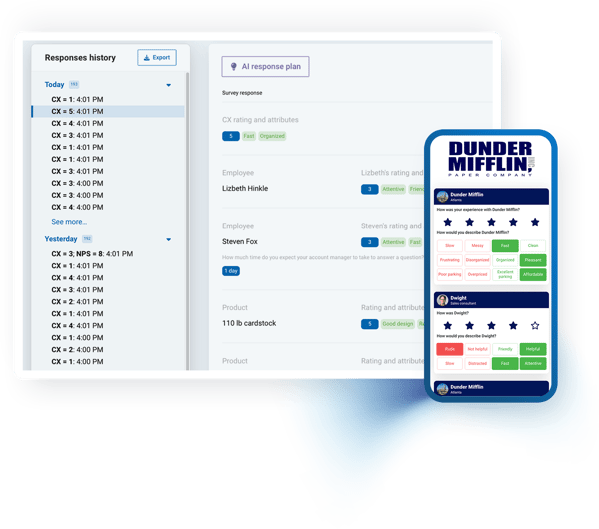
Macorva CX: Customer Experience Powered by AI
Macorva CX leverages Radiant AI® to transform customer experience data into actionable insights. With its comprehensive features, Macorva CX empowers organizations to:
Design Customized Surveys
Create any kind of survey or feedback form to collect the specific information you need to address your unique CX challenges.
![]() Gather Real-time Feedback
Gather Real-time Feedback
Utilize engaging, personalized surveys to capture feedback from customers anytime, anywhere.
Automate Customer Surveys
Automate customer surveys to gather feedback at key stages of the customer journey, providing continuous insights into their experiences.
Streamline Customer Follow-up
Implement streamlined follow-up processes to engage with customers, turning positive experiences into valuable reviews.
![]() Understand Sentiment
Understand Sentiment
Harness AI-powered sentiment analysis to gauge the overall tone and sentiment of customer feedback, uncovering valuable insights into their attitudes and concerns.
Streamline and Simplify Data Analysis
Leverage intuitive, user-friendly data analysis tools to gain a clear understanding of customer feedback and identify areas for improvement.
Identify Key Insights
Employ automated AI-powered data analysis and insights to extract hidden patterns and trends from customer feedback, providing actionable recommendations for CX improvement.
Personalize Employee Development
Implement automated AI-powered employee coaching to provide personalized guidance and support to employees, fostering their growth and development and improving customer interactions.
Empower Managers with Efficient, Actionable Reports
Employ automated AI-powered manager enablement to equip managers with the skills and knowledge to effectively address customer concerns, improve CX, and drive team success.
Take the First Step
Harness the power of data and AI to create a superior and engaging customer experience that drives customer satisfaction, loyalty, and long-term business success. Contact us today to learn how Macorva CX can transform your customer experience journey.
